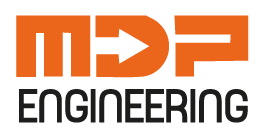Reverse engineering is widely used across various industrial sectors, offering measurable benefits in both maintenance and new project development. It is applied to reproduce worn machine components, repair damaged parts, and precisely fit new parts into existing systems. This approach is invaluable for production line upgrades, where improvements must be integrated without halting operations. It also facilitates the digitalization of technical heritage, ensuring that information on historical designs is preserved for future use. Furthermore, it enables the design of replacements and structural changes (re-design), leading to greater efficiency and reduced production costs.
